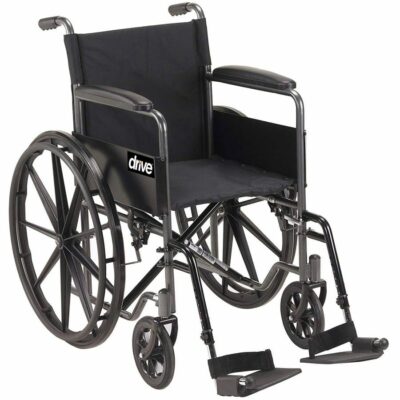Wheelchairs have moved on a long way from the old days of chunky grey metal, with nuts and bolts everywhere.
People want to look good, and their wheelchair is no exception , particularly if you are out and about in it all day.
At Wheelchairs on the Run, we put allot of effort into making our Rigid Wheelchair range looking good and customize with a range of contrasting colours.
Folding Manual Wheelchair have traditionally been a “cross-brace “, “X” design where the frame folds in half by bringing the sides of the wheelchair together. More recently, a “scissor” brace frame has been designed allowing the user to fold and unfold the chair from the front and back of the chair.
The “cross-brace” design folding frames by virtue of their design have more “moving parts” to allow the chairs to fold. This can add weight although this is significantly improved.
Folding frames are available in Titanium and Aluminium and Carbon Fibre. They were traditionally designed to whereby only the footplates flipped up out of the way for stand transfers.
Then they progressed to swing-away legrest, and removable arms. This progressively made the chair lighter for taking off components to make it smaller and lighter for transport.
Quick release axles are an option offered on many chairs and help reduce the transfer weight and size for smaller vehicles.
A newer style, the scissor brace folds by pulling the release mechanism from the front of the chair, making it accessible for the end- user to reach and fold themselves.
Folding chairs have their advantage with swing-in or out mechanism and the primary consideration for use is an open area on front of the chair for transfers.
Rigid Manual Wheelchairs for everyday mobility were developed with design concepts from sports wheelchairs.
Traditionally Aluminium was used for sport, but the frames are also available in Titanium and Carbon Fibre for everyday use. Aluminium in sport is preferred as you do not loose energy as you push. Also, the reduced number of moving parts created a wheelchair base that was lighter. This means that each push on the wheel would take the individual farther with less effort thus giving them a competitive advantage.
When picking an active user wheelchair consider your level of experience. If you are new to self-propelling, it can take a while – often around a year or more your driving skills will develop with time, so an adjustable chair will let you change the profile from a stability-focused position to a much more active and efficient “tippy” setup as your skills improve.
More experienced wheelchair users usually know their ideal setup so need less adjustments – often just some minimal fine-tuning is needed, allowing the chair to be lighter. For those with years of experience, a bespoke welded frame is the ultimate choice – while allowing no margin for corrections, it is the lightest option, allowing you to propel further and faster.
One of the most crucial factors when picking a wheelchair is its weight.
After all, the heavier the wheelchair, the more you will have to push around with you. Much of this is discussed in the below three sections (transport, folding or rigid, frame material) as that tie into the weight of the chair.
Many products list two different weights – the “transport weight”, which reflects how the wheelchair will most commonly be lifted (cushion and wheels removed), and the “overall weight” which reflects what you will be propelling around.
Bear in mind that advertised weights tend to be based off exceedingly small seat sizes, and the lightest options available on the chair (some of which will be cost options). If you need a larger frame, or armrests and so on, the weight will be increased.
There are two decisions when it comes to weight:
“Total weight” of the wheelchair.
Lifting weight. The total weight involves the frame weight and the weight of the components and seat cushion and back support. When the overall weight is reduced it improves optimal propulsion efficiency and energy conservation. It is important to remember that you can start with an ultralightweight frame but end up with a heavier final wheelchair system if you’re not careful about the weight of the components and seating you choose.
Alternatively, it’s possible to have a heavier chair that is configured where the wheel access is optimal for propulsion making it more efficient than a poorly configured lighter frame chair.
One must be careful when comparing the “quoted” weights especially when comparing between manufacturers. The base weights are weighed differently with regards to which components are included or not.
Traditionally, folding wheelchairs are perceived as more transportable, and they are therefore a popular choice for careers or family members to fold up and put in a car. They also have the advantage of taking up limited space in your house when not in use.
However, rigid wheelchairs can potentially be extremely transportable – more so even than folding ones.
Most higher end ones can have folding backrests that lock down, and with the quick release wheels popped off this makes them incredibly compact – this allows the wheelchair user to lift them easily over their body and onto a passenger or rear seat (they will also fit into the back of most cars).
Significantly lighter than folding wheelchairs, they often allow the wheelchair user to independently drive and transport their own wheelchair without needing assistance.
As discussed above, transporting is a key factor when deciding between a folding or rigid wheelchair. However, this decision has a big impact on performance too.
Rigid wheelchairs offer much improved efficiency by being much lighter, with equivalent folding chairs usually being at least a couple of kilos heavier. Roughly 75% of active user wheelchairs are rigid ones, and we generally recommend opting for one unless there is a requirement for it to be folded.
